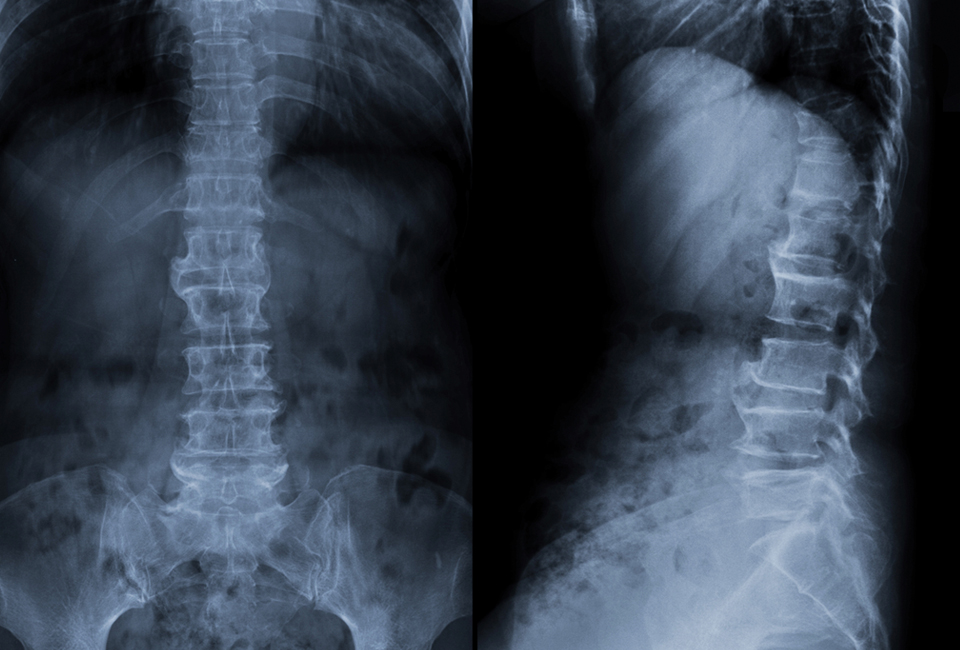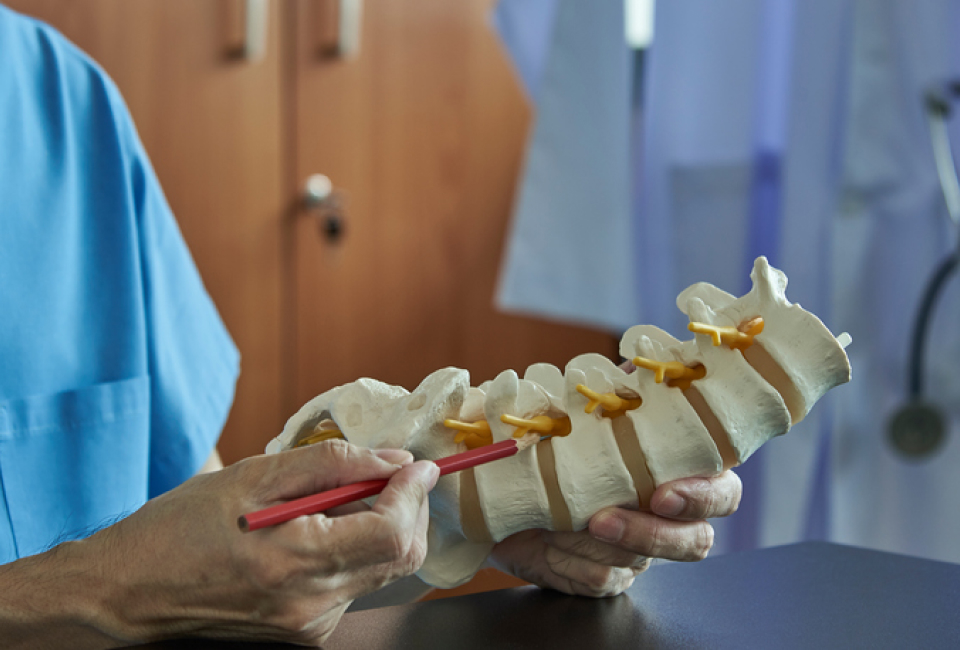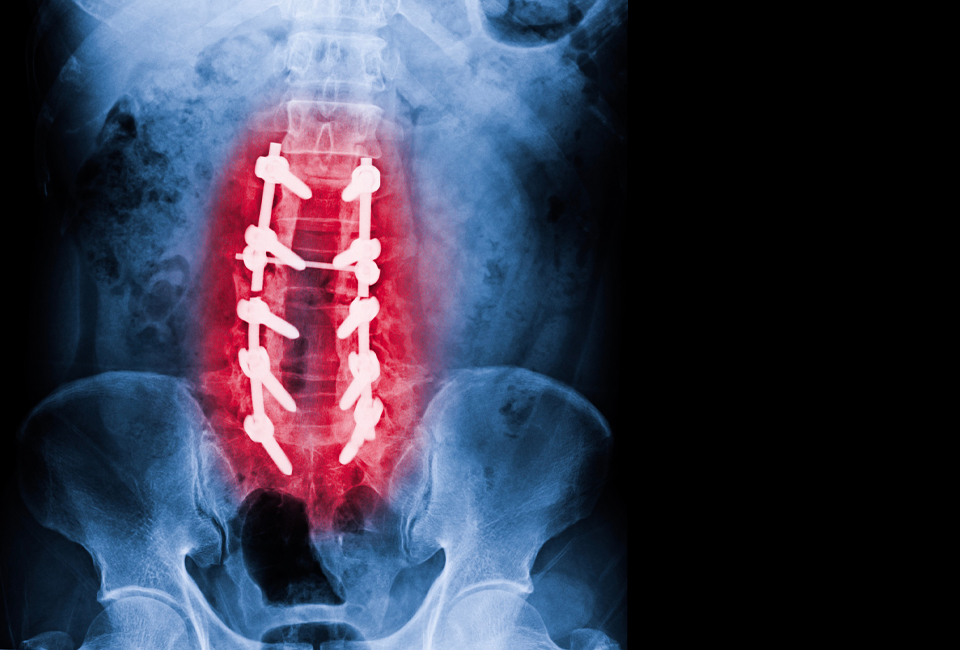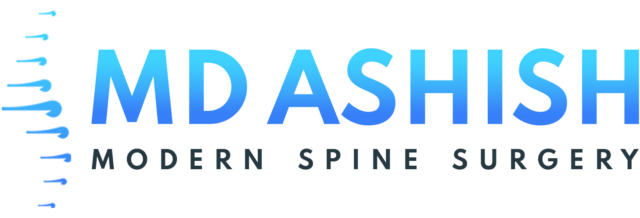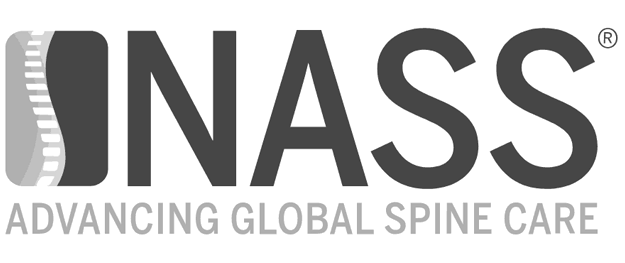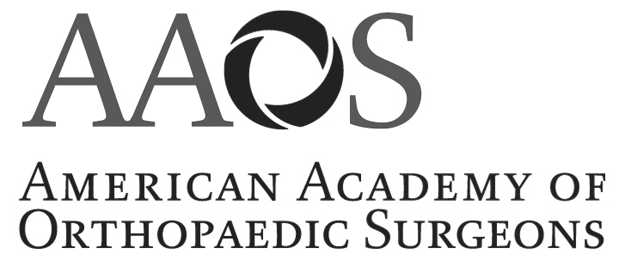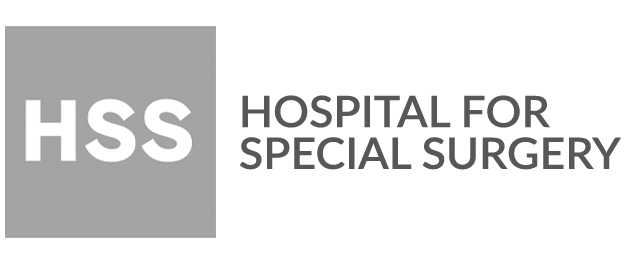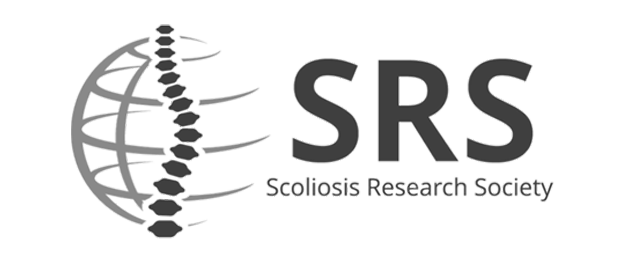CONDITIONS EXPLAINEDFlatback
CONDITIONS EXPLAINEDFlatback
Proper alignment of the spine is essential to facilitate normal posture and gait. In flatback syndrome, a loss of lordosis or normal curvature of the spine resulting in symptoms of pain and fatigue. Symptoms usually progress over the course of a day as stress gradually compounds on the spine. Patients typically notice increasing difficulty maintaining erect posture, and pain usually presents in the low back, thighs, and groin.
Flatback syndrome is relatively rare, and was first described as a result of early surgical treatments for scoliosis that resulted in a flattening effect on the spine. Some conditions that may lead to flatback syndrome include:
- Ankylosing Spondylitis, a condition in which stiffness and loss of lordosis occur over the course of the inflammatory and arthritic disease.
- Degenerative Disc Disease may result in flatback syndrome as discs degenerate and lose their ability to provide normal lordosis of the spine.
- Post-laminectomy Syndrome, which is sometimes associated with failed back surgery syndrome, occurs after laminectomy for decompression of spinal nerves. If the spine is unable to compensate for the removed tissue, loss of lordosis may occur.
- Vertebral Compression Fractures usually result from degeneration of the vertebrae due to an underlying condition such as osteoporosis, and can lead to a flattening of the vertebral column.
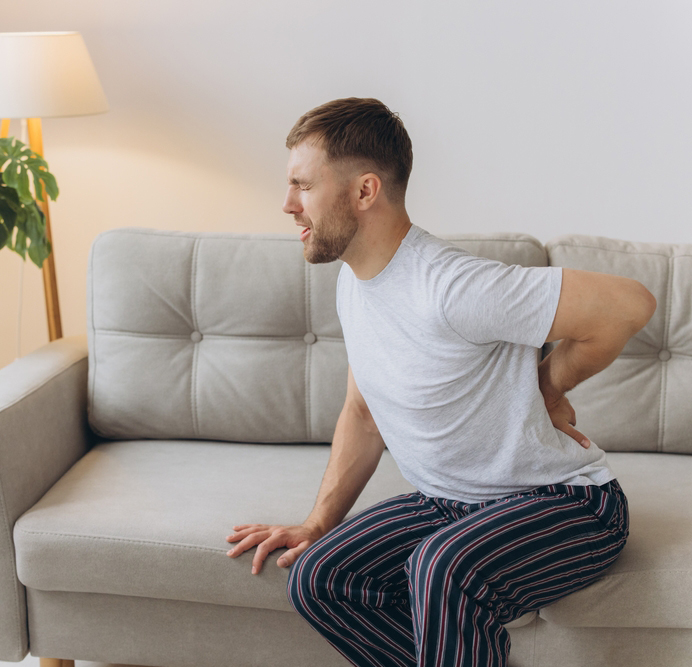
Proper alignment of the spine is essential to facilitate normal posture and gait. In flatback syndrome, a loss of lordosis or normal curvature of the spine resulting in symptoms of pain and fatigue. Symptoms usually progress over the course of a day as stress gradually compounds on the spine. Patients typically notice increasing difficulty maintaining erect posture, and pain usually presents in the low back, thighs, and groin.
Flatback syndrome is relatively rare, and was first described as a result of early surgical treatments for scoliosis that resulted in a flattening effect on the spine. Some conditions that may lead to flatback syndrome include:
- Ankylosing Spondylitis, a condition in which stiffness and loss of lordosis occur over the course of the inflammatory and arthritic disease.
- Degenerative Disc Disease may result in flatback syndrome as discs degenerate and lose their ability to provide normal lordosis of the spine.
- Post-laminectomy Syndrome, which is sometimes associated with failed back surgery syndrome, occurs after laminectomy for decompression of spinal nerves. If the spine is unable to compensate for the removed tissue, loss of lordosis may occur.
- Vertebral Compression Fractures usually result from degeneration of the vertebrae due to an underlying condition such as osteoporosis, and can lead to a flattening of the vertebral column.

Experiencing Symptoms of Flatback?
Detection & Diagnosis
Diagnosis of flatback syndrome starts with patient history, as patients will typically present with a history of back pain and possibly prior surgery or underlying disease process. Subsequently, other diagnostic imaging may be performed to confirm and visualize the diagnosis, such as:


